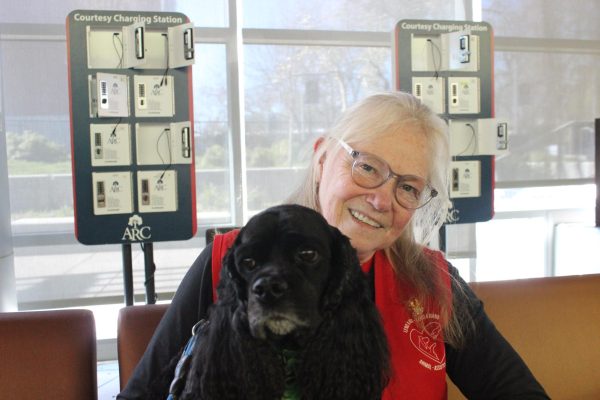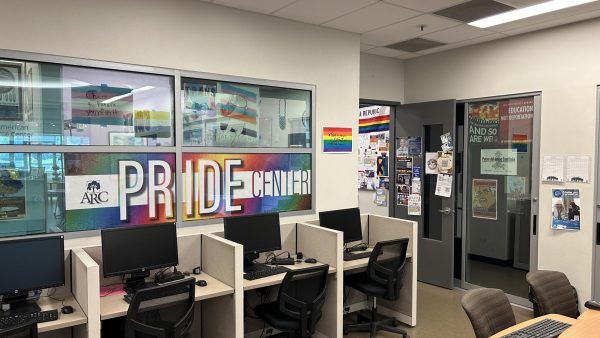Test monitoring systems show bias, educators look for new ways to combat changing learning environments
“I feel I can’t look away from the screen for a moment”
Test monitoring systems which use facial recognition software, have been proven to have algorithmic racial and socioeconomic biases, according to a 2019 study done by the National Institute of Standards and Technology (NIST). (Photo via Unsplash)
When the COVID-19 pandemic forced colleges to move learning online, some professors started using test monitoring systems to monitor students while they take tests from home.
While test monitoring systems can be an efficient way for professors to monitor students and ensure they don’t cheat, there are also drawbacks to how many softwares work. Due to the use of facial recognition software, some test monitoring systems have shown algorithmic racial and socioeconomic biases, according to a 2019 study produced by the National Institute of Standards and Technology (NIST).
The study shows that students of color are more likely to be flagged for cheating because some test monitoring systems use facial-recognition software datasets in which white male faces are overrepresented. The study shows higher false positives for Asian and African American students, with the highest rates of false positives for African American females.
Though not all test monitoring systems use facial matching or recognition, some still find its use problematic.
Justice Jones, a nutrition major at American River College, says proctoring software has created some issues during tests that have caused extra stress and work for both her and her professors.
Proctorio, which uses a facial detection software instead of facial matching or recognition software, according to David Lux, head of communications at Proctorio, is the most commonly used test monitoring system at ARC.
Though the software does not use facial matching or recognition, Proctorio, is a browser plug-in that works by detecting and analyzing a student’s gaze and how often they look away from the screen, as well as how often they type and at what rate a student moves their mouse compared to the rest of the class on average.
The software then creates a “suspicion score” for each student, flagging ones whose scores indicate possible cheating.
Jones says this complicates the exam process because she constantly has to make sure she doesn’t do anything that will be flagged as possible cheating.
“In a recent exam, my dog was in the room because I had no other choice and at one point, he wanted to leave his bed and jump onto my lap,” Jones said. “I was scared of even just saying ‘no’ because I didn’t want to be flagged.”
Lux said in an email to the Current that a dog jumping into a student’s lap would not commonly be seen as cheating by instructors, but according to Jones, Proctorio adds an extra layer of stress during exams that wasn’t there before its use.
“I feel I can’t look away from the screen for a moment,” Jones said. “I am constantly analyzing my own behavior to make sure it doesn’t seem like I’m cheating or will be flagged as suspicious.”
Kris Hooks, an adjunct journalism professor at Sacramento City College, recalled when he took classes as a student, his professor used Proctorio. He decided not to use it as a professor himself because it feels invasive and isn’t readily available for every student to use.
“To need to use a camera to show a [student’s] surrounding area in their home doesn’t sit right with me,” Hooks said. “Not every student has access to [the software] and other things it may require.”
According to ARC’s President, Melanie Dixon, there is no formal rule that professors must use test monitoring systems and instead, the decision is left to the professors.
Dixon says she is aware of many of the problems with test monitoring systems and that the college is exploring other alternatives to using them in the coming future.
For now, Dixon acknowledges the drawbacks to using these systems and says the college is open to another way. According to Dixon, in-person test monitoring/proctoring center is being discussed and will open in the coming semesters.
The space would allow students the option to test in person instead of with the use of a test monitoring system.
“One of the challenges is the resources to secure a proctor for that space full time, but there’s absolutely an interest in our mind to create a central location that all students have access to, and they’re able to work within their preference,” Dixon said.
Dixon added that in addition to the college being mindful of these biases in software, the companies that make them should also be held accountable to center equity in their products.
“There’s not a perfect solution, but we really need to get to that solution in order to ensure our students are reaching their maximum potential,” Dixon said.
Editor’s Note: This story has been updated to reflect that Proctorio does not use facial matching or recognition software and was not evaluated in the 2019 NIST study cited in this article. In addition, information recorded from the software is reviewed by institution-approved administrators only, and students should speak with instructors if they have any concerns with using the software before a test, such as children or animals in the room. The Current staff apologizes for any misunderstandings that our mistake may have caused.











